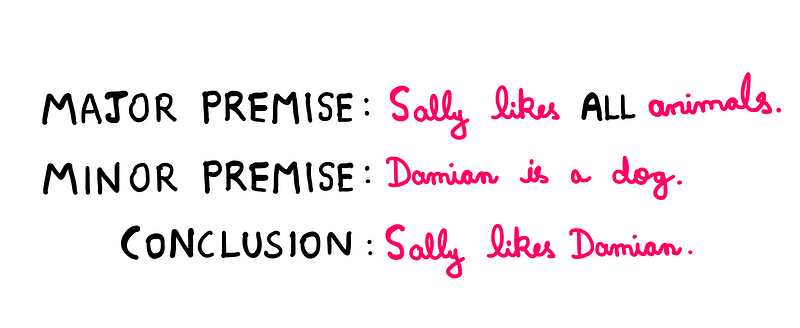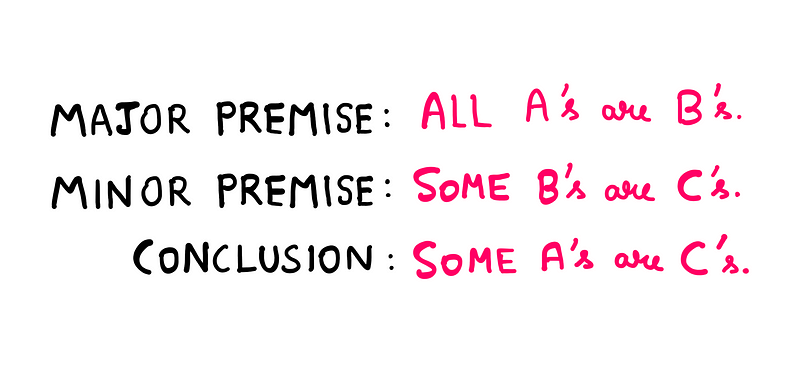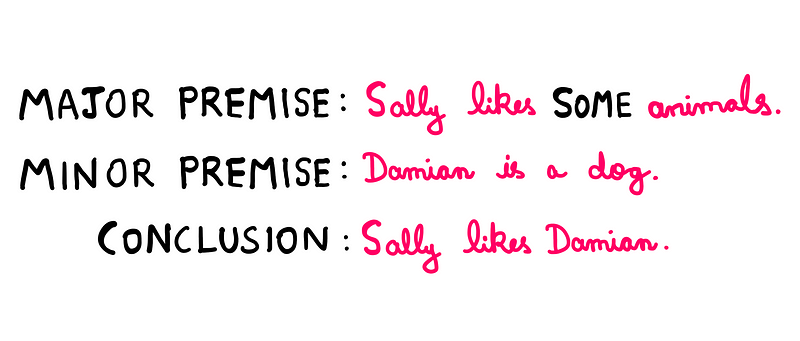Understanding Fallacies: A Clearer Perspective on Logic
Written on
Chapter 1: Defining Fallacies
The term "fallacy" frequently arises in academic discussions, particularly in scientific contexts. It is commonly used to undermine an argument or highlight flaws within it. However, as the term has become more popular, I've noticed a troubling trend: many individuals misuse it.
This situation illustrates how scientific terminology can gradually morph into everyday language, which isn't inherently problematic. However, the casual application of "fallacy" in scientific discourse warrants caution. To address this concern, I aim to clarify the formal meaning and application of the term. I will start by distinguishing between informal and formal logic. Following that, I will delve into the concept of syllogisms. Ultimately, I will integrate these ideas to provide a comprehensive understanding of what constitutes a fallacy.
Section 1.1: Distinguishing Between Types of Logic
Consider a scenario where you and a friend are engaged in a passionate debate, and she remarks, "Your reasoning seems sound, but I feel like you're overlooking something."
The reasoning your friend refers to is informal logic, which is inductive and allows for subjective interpretation regarding the burden of proof. If you manage to persuade her, she may accept your informal reasoning, and vice versa.
In contrast, the domains of philosophy and mathematics adhere to a different logic framework. Here, "logic" refers to a system of deductive reasoning grounded in specific premises, imposing stringent requirements on proof.
Informal logic emphasizes applying both learned and experiential knowledge to analyze problems and arrive at conclusions. On the other hand, formal logic centers on the structure of arguments in an abstract manner to determine the validity of a conclusion. While formal logic has a limited number of argument forms, informal logic allows for infinite interpretations. In this discussion, we will focus on formal logic within a scientific framework, specifically regarding the validity of logical arguments.
Section 1.2: The Concept of Syllogism
A syllogism is a logical form consisting of a major premise, a minor premise, and a conclusion derived from those premises. To illustrate:

In this example, the conclusion is drawn from the major and minor premises. The major premise sets a broad context, while the minor premise narrows the focus.
It's important to note that in formal proofs, all assumptions and definitions should be explicitly stated. However, for brevity in this discussion, I will take some liberties. The conclusion can either be valid or invalid. A conclusion is valid only if it necessarily follows from the premises; if it doesn't, it is deemed invalid. With that understanding, we can explore the notion of fallacies.
Chapter 2: Understanding Fallacies
A fallacy is essentially an invalid argument. You might be wondering, "Is that all there is to it? Why the lengthy explanation?" If that's your thought process, I appreciate your patience. The key takeaway here is the phrase "invalid argument." It is crucial not to confuse this with its more casual meanings.
The scientific understanding of fallacy strictly adheres to the logical definition of an "invalid argument." For instance:

In this case, the conclusion is invalid because it assumes that all A's could be B's that are not C's. Here's a more relatable example:

Here, while Sally enjoys some animals, it doesn't logically follow that she likes Damian (the dog). Thus, the conclusion is fallacious.
Closing Remarks
Real-world arguments often lack the clarity of the Sally/Damian scenario, and the line between formal and informal logic can be blurred. However, when engaging in scientific discussions, it is essential to adhere to formal logic and encourage others to do the same. With practice, you'll start recognizing recurring patterns. Armed with knowledge and experience in formal logical arguments, you can effectively assess the validity of various arguments.
This approach has given me a considerable edge in discussions, allowing me to identify pseudoscientific arguments quickly. By understanding the proper use of "fallacy" within scientific contexts, you can become adept at spotting flawed reasoning.
If you're interested in exploring more of my work, a comprehensive map of my content is available on my about page. For those who wish to support future projects, consider contributing on Patreon.
A lecture on how to identify logical fallacies effectively.
A discussion featuring Joe Rogan and Ben Shapiro on recognizing logical fallacies.